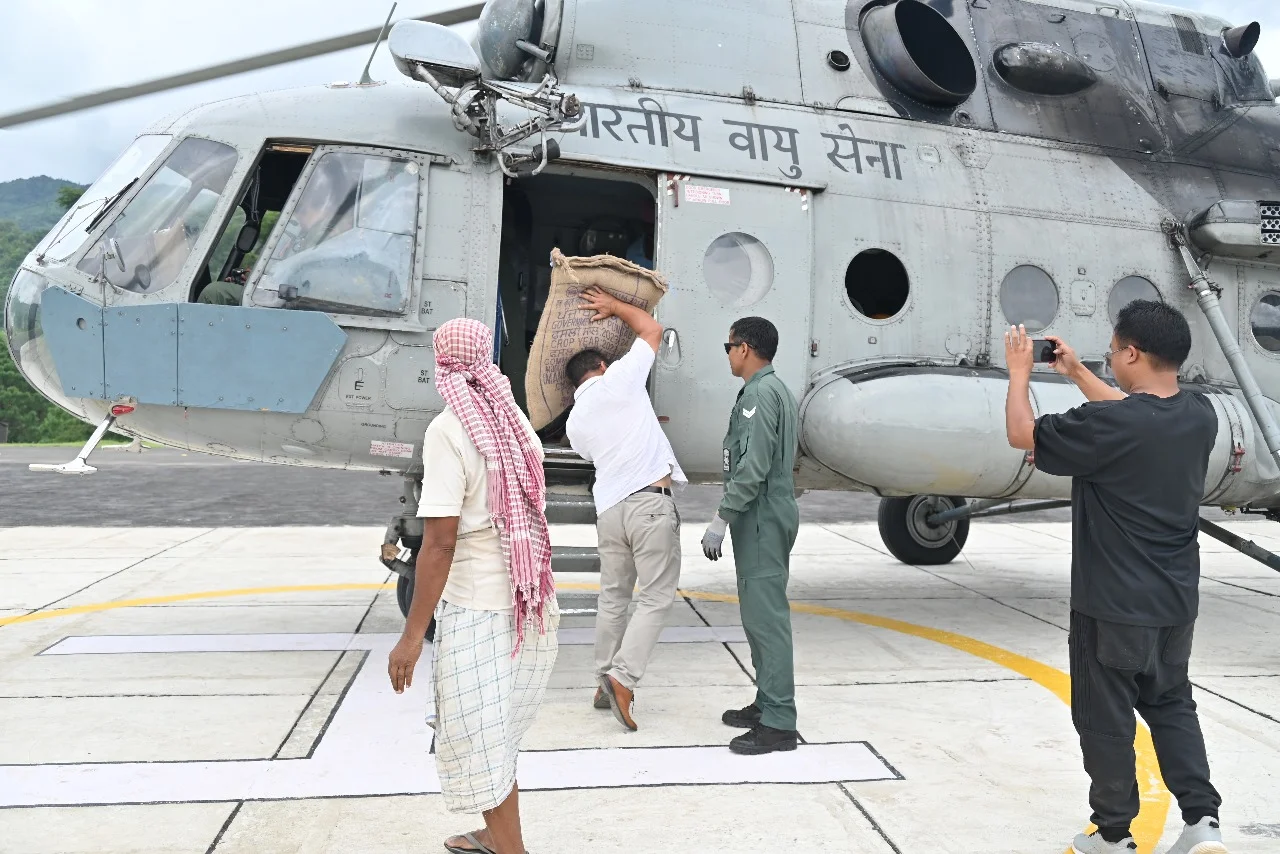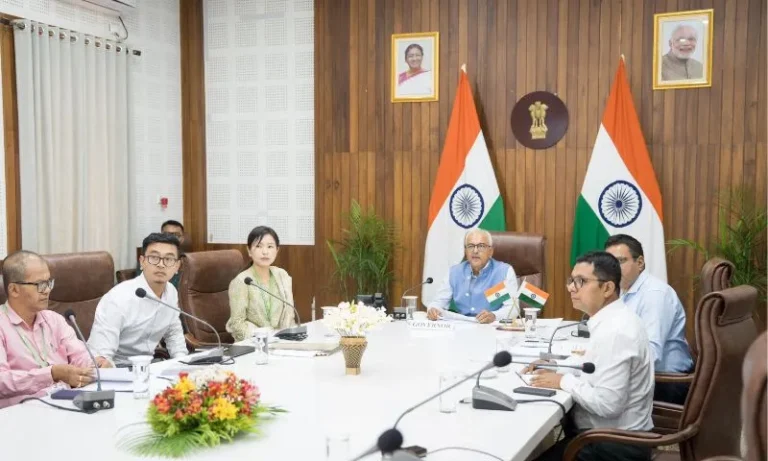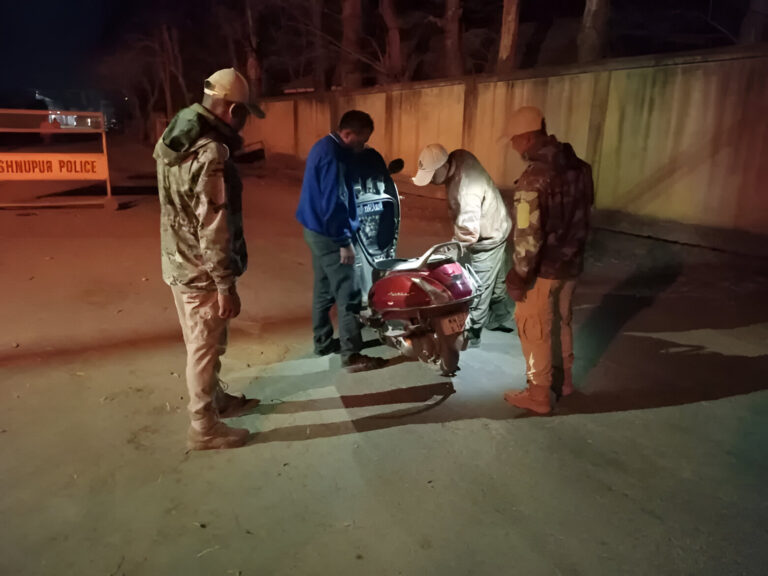Manipur Historic Airdrop Mission: Delivering Lifesaving Aid to Landslide-Hit Villages in Churachandpur
Summary of the News Article
Triggered by relentless rainfall over the past week, more than 90 landslide points crippled the Churachandpur–Tipaimukh Road (NH-02), cutting off remote hill villages in Manipur’s Churachandpur district. In a first for the state, a coordinated airdrop mission delivered rice, pulses, and essential medical supplies to Muolhoiching helipad—bringing lifesaving relief to marooned communities unable to receive aid by road
Introduction: When the Road Vanishes, the Sky Becomes the Highway
Imagine waking up to the roar of monsoon rains, only to find your lifeline—National Highway 2—buried under mud and rock. For hundreds of families in Churachandpur, that nightmare became reality as over 90 landslide points severed ground access, leaving them stranded without food, medicine, or hope. But in a moment reminiscent of mountain rescue tales, the state’s first-ever “air highway” opened up, dropping essential supplies from choppers onto Muolhoiching helipad—a beacon of relief in the storm
Why This Matters
- Humanitarian urgency: Villagers risk dehydration, starvation, and disease.
- Geographic challenge: Rugged terrain and continued rain make road clearance slow and dangerous.
- Innovation under pressure: Airdrops turn aircraft into ambulances, bridging divides when earth itself fails.
The Anatomy of a Crisis: Landslides on NH-02
Monsoon’s Double-Edged Sword
In Manipur, monsoon rains can be both blessing and curse. While they nourish rice paddies, torrential downpours also loosen soil on steep slopes—triggering a cascade of mud and boulders. On July 9, uninterrupted rain submerged 115 houses in Churachandpur town and sent rivers overflowing, even washing away roads and bridges nearby
The Churachandpur–Tipaimukh Lifeline
NH-02 isn’t just tarmac; it’s the artery that links remote hill villages to hospitals, markets, and schools in Imphal and beyond. When over 90 landslides gouged trenches across this road, the consequences were immediate:
- Disrupted supply chains: Food, fuel, and medical cargo stranded in convoys.
- Emergency access blocked: Ambulances, fire tenders, and rescue teams forced to turn back.
- Economic standstill: Farmers unable to transport perishable vegetables, traders losing livelihoods.
Mounting Impacts: Lives on Hold
Human Costs
Without swift action, simple ailments become deadly. Malaria, diarrhea, even minor injuries can spiral when clinics lie unreachable. One tribal man from Old Phaisat was tragically swept away by a mudslide earlier in July—an early warning of nature’s merciless reach
Economic Strain
Time is money—especially in agrarian communities. Crops rot on the vine when produce can’t leave fields, and daily wage workers lose incomes as supply trucks sit idle. Villagers watch helplessly as bills mount and savings drain.
Psychological Toll
Isolation breeds anxiety. Children miss school, elders fretting over dwindling stocks. The road’s collapse severs not just asphalt, but social bonds—festivals postponed, markets shuttered, and families cut off from relatives in neighboring valleys.
The Airdrop Blueprint: Turning Planes into Lifelines
Collaboration at Altitude
Pulling off an airdrop isn’t as simple as tossing packages out the door. It demands seamless coordination among:
- State Administration: Identifying priority villages and arranging ground logistics.
- Indian Air Force (IAF) / State Air Wing: Deploying helicopters—likely from the 36 Squadron—trained in precision low-altitude drops.
- Civil Society & Volunteers: Marking drop zones, erecting temporary helipads, and retrieving supplies for distribution.
Choosing Muolhoiching Helipad
Nestled on a plateau, Muolhoiching offers a rare flat expanse amid jagged hills. Its selection hinged on:
- Accessibility: Close enough to stranded villages yet clear of debris.
- Safety buffer: Minimizing rotor-wash impact on bystanders and avoiding tree cover.
- Distribution hub: Space for staging hundreds of rice bags, medical kits, and pulses.
Cargo Manifest
- Rice & Pulses: Staples to last families through the clearance period.
- Medical Supplies: First-aid kits, ORS packets, antibiotics, and essential drugs to stave off outbreaks.
- Sanitation Kits: Soap, water purification tablets, and menstrual hygiene products—often overlooked but critical.
Conclusion: From Isolation to Connection
In the highlands of Churachandpur, where valleys echo with the rumble of falling rock, the historic airdrop mission did more than drop rice sacks—it delivered hope. It showed that when earth fractures, human ingenuity can bridge divides from the sky. As roads slowly reopen and engineers fortify hillsides, the memory of those helicopter blades cutting through mist will linger—reminding us that even in the darkest valleys, relief can come soaring on wings.
❓ Frequently Asked Questions (FAQs)
1. Why was an airdrop necessary in Churachandpur?
Over 90 landslide points rendered NH-02 impassable, cutting off villages from ground aid. Airdrops bypassed debris and delivered essentials directly to Muolhoiching helipad
2. What supplies were air-dropped?
The mission delivered rice, pulses, medical kits (including antibiotics and ORS), and sanitation items like water-purification tablets and soap
3. Who coordinated the airdrop operation?
State disaster authorities and district administration liaised with the Indian Air Force (likely 36 Squadron) and local volunteers to mark drop zones and manage distribution
4. How did villagers participate in the mission?
Locals helped clear and secure the helipad, formed distribution lines, and learned to use ration/inventory cards—transforming from recipients into relief partners
5. What long-term steps will prevent future isolation?
Plans include slope stabilization, improved drainage along NH-02, construction of additional rural helipads, and community early-warning systems for landslide risks



